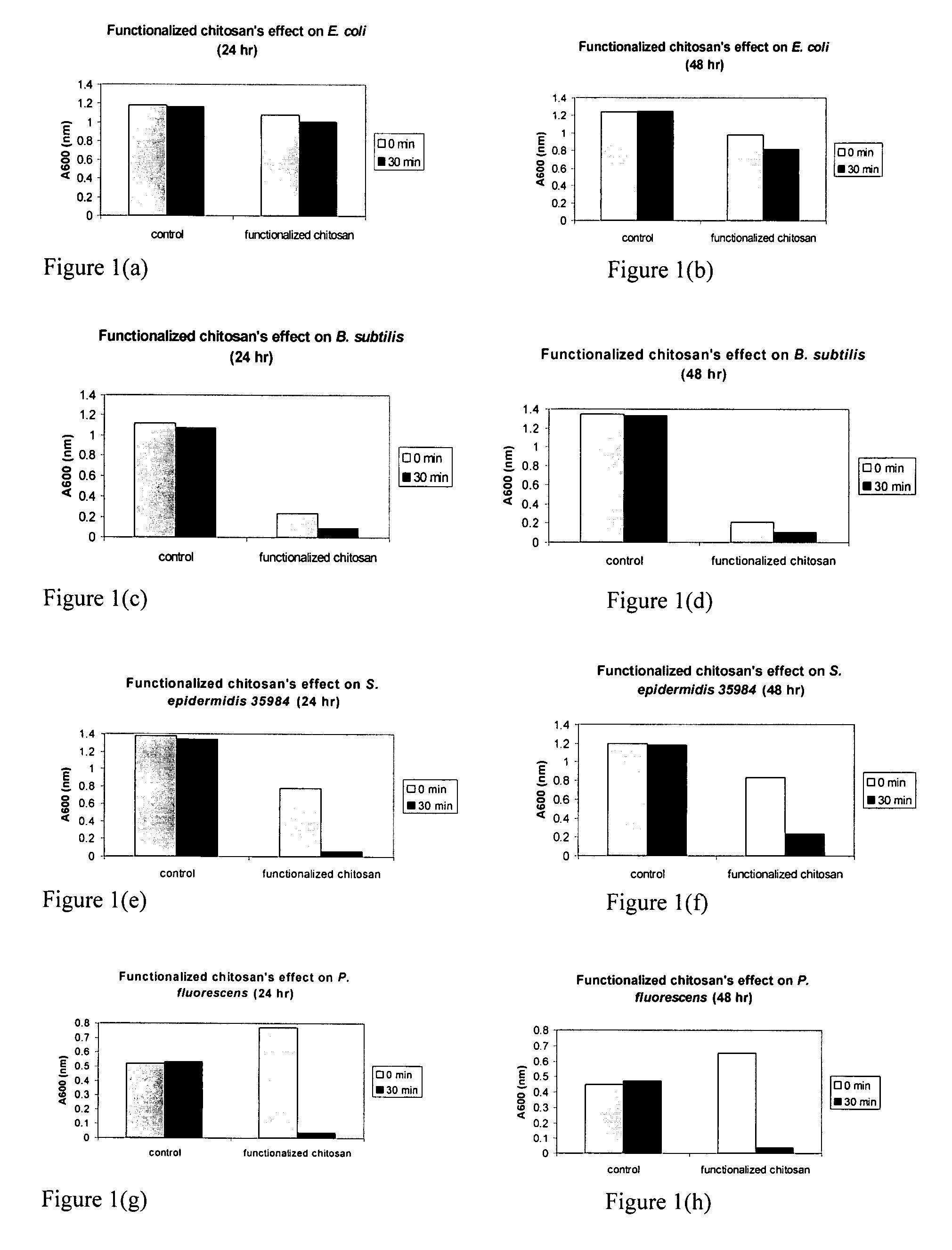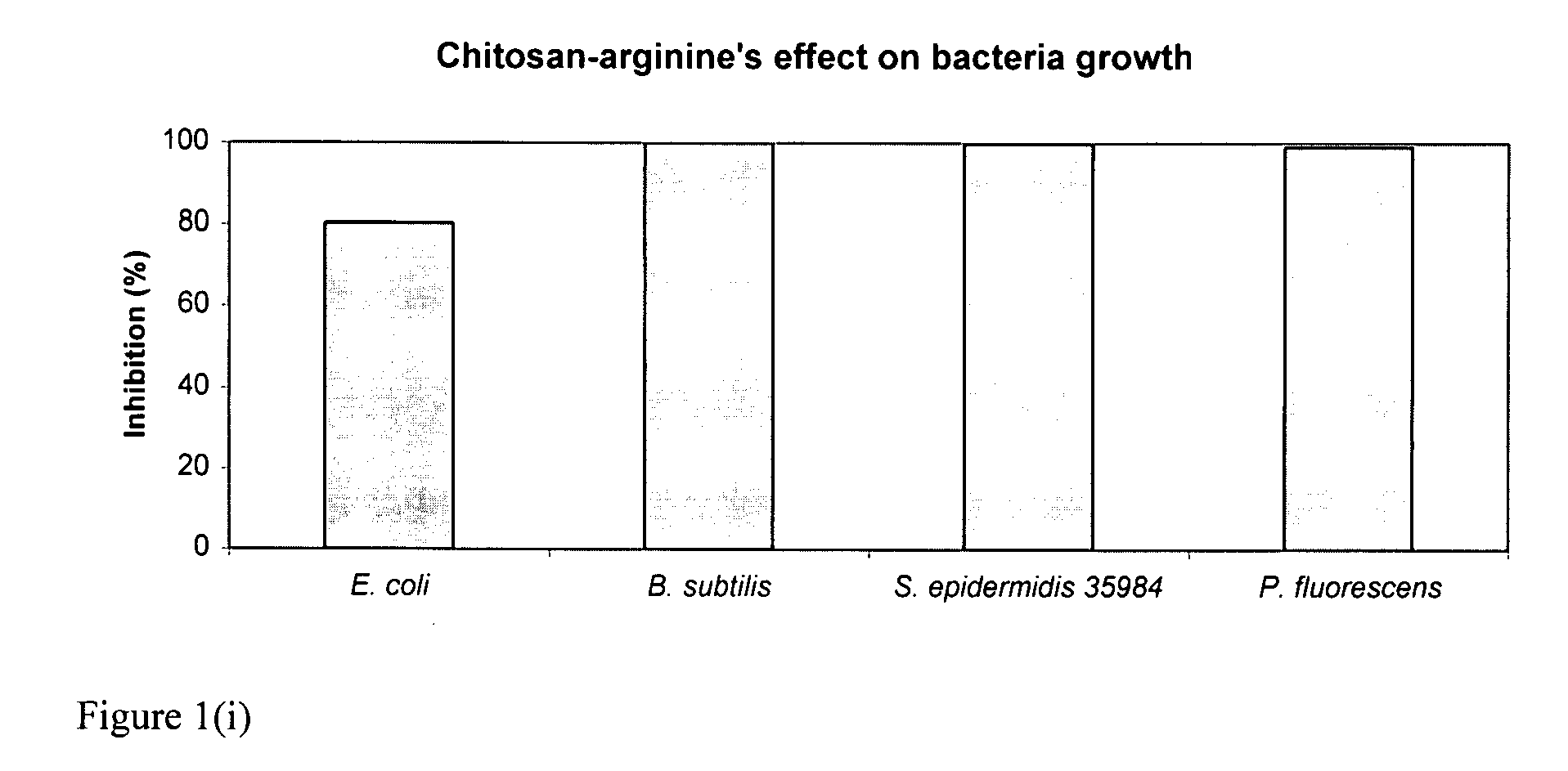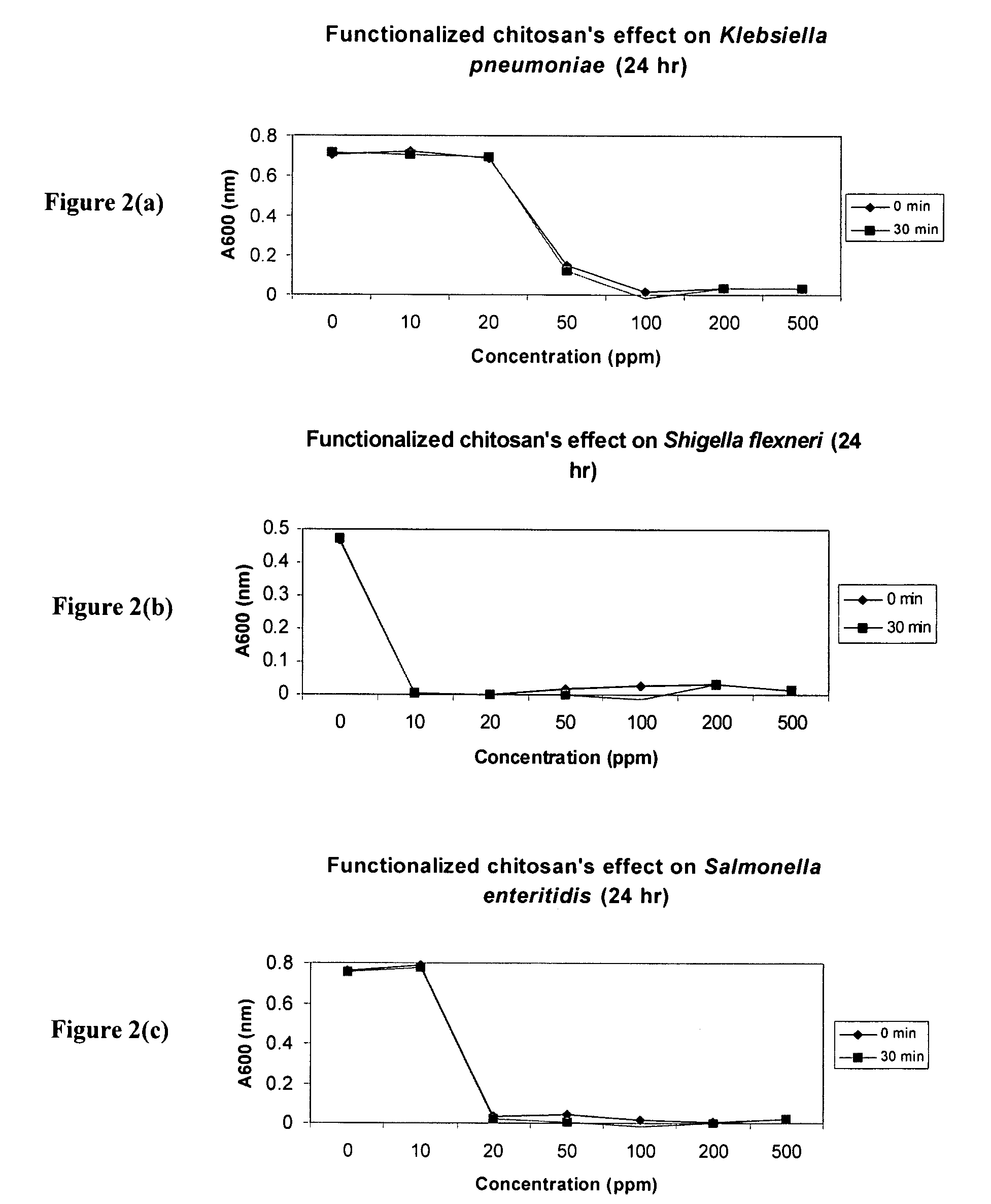Chitosan-derivative compounds and methods of controlling microbial populations
a technology of chitosan and derivative compounds, applied in the direction of disinfection, dentistry, drug compositions, etc., can solve the problems of limited success in reproducing the effectiveness of natural polycations as antibacterials with limited toxicity, biodegradable and biocompatible with low toxicity to mammalian cells, and achieve the effect of rapid antibacterial
- Summary
- Abstract
- Description
- Claims
- Application Information
AI Technical Summary
Benefits of technology
Problems solved by technology
Method used
Image
Examples
example 1
Broad Bacteriocidal Properties of Chitosan Arginine: Planktonic Growth
[0168]The bacteriocidal activities of chitosan-arginine was compared for both gram-positive and gram-negative bacteria. 6% functionalized chitosan-arginine that is highly positively charged without the addition of an acid, and having broad molecular weight distribution between 25 kDa and 350 KDa, was tested at physiological pH. Both pathogenic and non-pathogenic bacteria ‘model’ bacteria were tested either in either planktonic growth conditions. Five gram-negative bacteria, Escherichia coli, Pseudomonas fluorescens, Klebsiella pneumoniae, Shigella flexneri and Salmonella enteritidis; and two gram-positive bacteria, Bacillus subtilis, Staphylococcus epidermidis were tested. The non-pathogenic bacteria were chosen because they are models for their pathogenic counterparts: Escherichia coli K12 is a model for enterotoxigenic E. coli (ETEC), enteroinvasive E. coli (EIEC), enterohemorrhagic O157:H7 E. coli (EHEC), enter...
example 2
Minimum Inhibitory Dose of Pathogen Models
[0169]The effect of chitosan-arginine on the bacterial growth in planktonic cultures of the gram negative pathogens Klebsiella pneumoniae, Shigella flexneri and Salmonella enteritidis was determined by measuring the optical densities (600 nm) of the liquid growth medium at various times post inoculation. The bacteria Klebsiella pneumoniae, Shigella flexneri and Salmonella enteritidis were grown overnight in Nutrient Broth, all at 37° C. with shaking. The original cell density was uniformly ˜109 cells, and the 0 dose of chitosan-arginine was performed using nanopure water as the control. The effect on viability as a function of dose of chitosan arginine was determined via standard plate counts. 7% functionalized chitosan-arginine at physiological pH dramatically inhibited the planktonic proliferation of K. pneumoniae, S. flexneri, and S. enteritidis in 24 hrs as demonstrated in FIGS. 2(a), 2(b) and 2(c) respectively, with viability decreasing...
example 3
Effect of Charge Density on Bacteriocide
[0170]The mechanism of antibacterial action of chitosan-arginine is dependant on the addition of positive charges and increased solubility. As demonstrated in FIG. 3, the amount of positive charge on the chitosan-arginine affects its bacteriocidal dose. The effect of two derivatives of chitosan-arginine, functionalized at 7% and 30% with a broad MW distribution between 25 kDa and 300 kDa were demonstrated for Staphylococcus pyogenes (Staph A) in cell culture media for two different innoculation doses of Staph A. Staph A was inoculated into cell culture media, RPMI, for an overnight growth at 37° C. with shaking, where the growth saturates as the nutrients get depleted, resulting in a consistent density that is about 109 (OD6002 with shaking. The final ODs (corroborated by plate counts) were plotted, as shown in FIG. 3. As demonstrated in FIGS. 3(a) and 3(c) the 7% functionalized chitosan-arginine inhibited the 1:100 fully at 100 ppm and the 1:...
PUM
| Property | Measurement | Unit |
|---|---|---|
| molecular weight | aaaaa | aaaaa |
| pH | aaaaa | aaaaa |
| MW | aaaaa | aaaaa |
Abstract
Description
Claims
Application Information
 Login to View More
Login to View More - R&D
- Intellectual Property
- Life Sciences
- Materials
- Tech Scout
- Unparalleled Data Quality
- Higher Quality Content
- 60% Fewer Hallucinations
Browse by: Latest US Patents, China's latest patents, Technical Efficacy Thesaurus, Application Domain, Technology Topic, Popular Technical Reports.
© 2025 PatSnap. All rights reserved.Legal|Privacy policy|Modern Slavery Act Transparency Statement|Sitemap|About US| Contact US: help@patsnap.com



